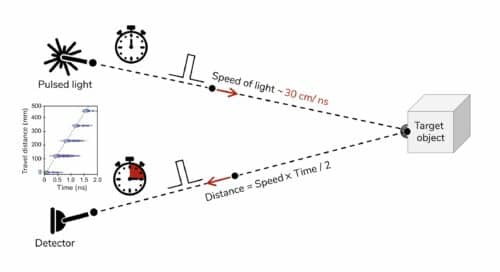Binary perovskites photodetectors convert near infrared light into electrical signals with 85% better efficiency and response time.
Researchers at the University of Toronto and the Barcelona Institute of Science and Technology have developed perovskite photodetectors with high efficiency and response time. The unique design of these photodetectors prevents the formation of defects between its different layers.

Photodetectors detect or respond to light, and can have numerous highly valuable applications. They can be integrated in robotic systems, autonomous vehicles, consumer electronics, environmental sensing technology, fiber optic communication systems and security systems.
“In these applications, fast photodetection is required in wavelength ranges beyond human vision,” Amin Morteza Najarian said. “Silicon, the legacy approach—and ideal for electronic readout—does not on its own unite high efficiency with high-speed, as a result of its indirect bandgap, a property of silicon’s band structure that produces weak absorption (hence a need for thick silicon) in the near infrared.”
“When light is absorbed by the perovskite active layer, the photogenerated electrons and holes are extracted through electron and hole transport layers,” said coauthor Maral Vafaie. “To achieve fast response times, these charge carriers must move rapidly across the devices, including the transport layers. Nickel oxide (NiOx) is characterized by high crystallinity and mobility, making it an ideal option for hole transport layer (HTL).”
Initially a chemical incompatibility occured between the established anti-oxidation strategy for PbSn perovskites and the NiOx layer. Hence they devised a method to remove oxygen from the device, converting unwanted tin species and ensuring that no harmful residues are left behind.
Initial evaluations achieved very promising results, both in terms of quantum efficiencies and response times. “We demonstrated that photodetectors fabricated using binary perovskites convert near infrared light into electrical signals with efficiency better than 85% with a response time faster than a fraction of nanosecond,” Sargent and Morteza Najarian said. “This is a 100 times improvement compared to previously reported solution-processed photodetectors. We showcase these performance metrics in spatially resolving sub millimeter distances, i.e., providing depth resolution.”






